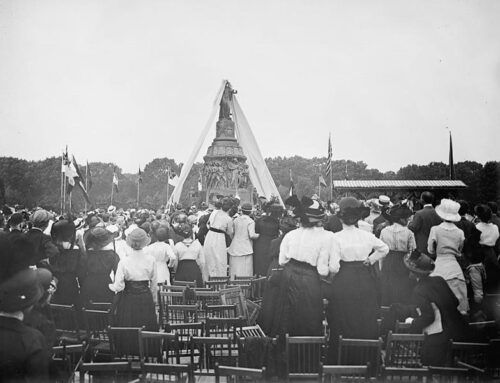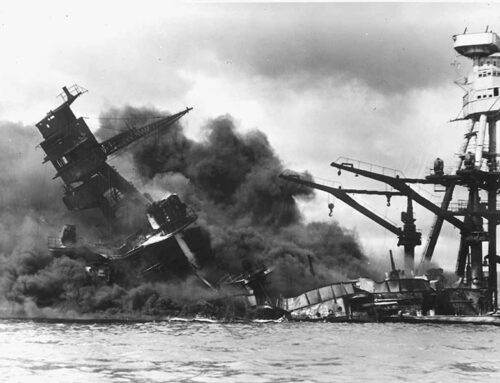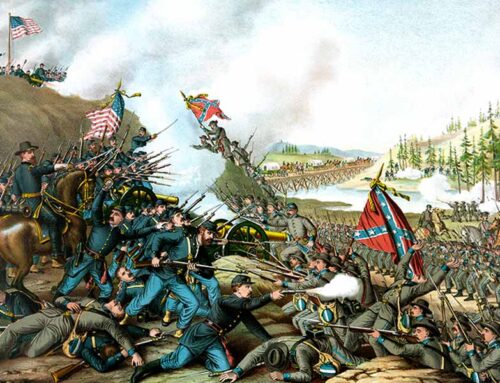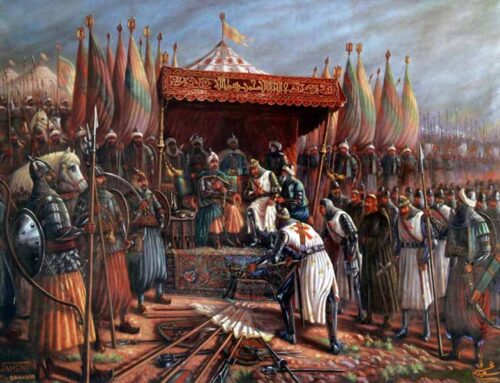The Birth of Charles Dickens, February 7, 1812
![]() or more than a century, the literary world proclaimed Charles Dickens the greatest novelist in the English language. With the deconstruction of literary standards and the moral turpitude that is celebrated in modern novels, Dickens no longer ranks where he once stood among English writers. Nonetheless, his impact was such that his characters remain in the corporate memory of educated people and his influence on the language is still deeply imbedded. His personal life experiences became the birthplace of Dickens’s incredible literary success, and his status as a social reformer and wit remain undiminished in a few surviving university literature departments and popular culture.
or more than a century, the literary world proclaimed Charles Dickens the greatest novelist in the English language. With the deconstruction of literary standards and the moral turpitude that is celebrated in modern novels, Dickens no longer ranks where he once stood among English writers. Nonetheless, his impact was such that his characters remain in the corporate memory of educated people and his influence on the language is still deeply imbedded. His personal life experiences became the birthplace of Dickens’s incredible literary success, and his status as a social reformer and wit remain undiminished in a few surviving university literature departments and popular culture.
 Charles Dickens (1812-1870) in his study at home, Gad’s Hill
Charles Dickens (1812-1870) in his study at home, Gad’s Hill
This author of fifteen best-selling novels of the Victorian Era was born on February 7, 1812 in Portsmouth, Hampshire, England, the second of eight children born to a naval pay clerk. Charles described himself as “a very small and not-over-particularly-taken-care-of-boy.” He became a voracious reader of exciting novels and a well-educated student at a dissenter school. His father had the bad habit of living beyond his means and ended up in debtor’s prison in London when Charles was eleven. His mother and the younger children stayed with his incarcerated father while Charles boarded with an old and poor friend of the family. He later was assigned to live in the back-attic of a member of the “insolvent court.” In each case, the people he lived with became the later models, “with a few alterations and embellishments,” for characters in his books, famously described in detailed and colorful prose. He spent Sundays with his family in prison, later the setting for Little Dorrit.

Dickens’ birthplace, 393 Commercial Road, Portsmouth, Hampshire, England

What remains today of the Second Marshalsea prison
Dickens got a job pasting labels on pots of boot black ten hours a day for just a few shillings a week to help out his parents and siblings. That experience among the working poor and roustabouts of the back alleys contributed to his later interest in social and work reforms, as well as providing another source of characters like old Fagin the master pick-pocket in Oliver Twist. The future author already demonstrated the sponge-like memory of youth, and his profound feelings that came with his troubled family like a plague. Upon receipt of a legacy from his mother, Charles’s father left debtor’s prison and reestablished his family in better circumstances.

An illustration from Dickens’ Oliver Twist, where Oliver famously asks “Please sir, may I have some more?” after finishing his meager rations
Charles got a job as a junior clerk in a law office and found that his abilities to mimic people made him a popular figure. He spent a multitude of hours at the theatres, where he studied famous performers. Joining a relative as a court reporter for four years taught him the ins and outs of “going to law,” that especially afflicted the poor. His experiences at Grey’s Inn Court provided a wealth of material for books such as Nicholas Nickleby and Bleak House. At the age of twenty, Charles Dickens decided on trying the theatre, a likely place for him given his entertainment abilities and zeal to be famous. In one of the historically interesting twists of providence, he missed his audition due to a cold, and settled on being a writer instead.
Dickens began as a political reporter in Parliament, recording the day-to-day debates and controversies of the politicians, as well as the campaign events of MP wannabes. His well-received articles and reports introduced him to important literary salons in London, and his friendships led to meeting his future wife, Catherine Hogarth, daughter of George Hogarth, news editor and friend of Sir Walter Scott. Dickens’s first runaway best seller—which began in installments—was the Pickwick Papers, featuring the clever, streetwise, and humorous Sam Weller, hired by Mr. Pickwick. With continued popular serials and their attending financial success, Dickens married Catherine Hogarth who, in time, bore him ten children

Catherine Thomson “Kate” Dickens, née Hogarth (1815-1879), wife of Charles Dickens
 Charles Dickens’ home, Gad’s Hill
Charles Dickens’ home, Gad’s Hill
Dickens is most often portrayed by friends and family as a firm Christian, and he did write a little book for his family entitled The Life of Our Lord, about Jesus Christ. He eschewed both Roman Catholicism and Evangelical Protestants, embracing a kind of liberal Anglicanism which promoted entertainments on the Sabbath, denied the inerrancy of Scripture, and evinced an attraction to Unitarianism, and later in life, “the paranormal.” He separated from his wife in 1858 and she took one child, never to see him again, leaving the other nine with him. Dickens was enamored with an eighteen-year-old actress, leaving her a substantial legacy upon his death; he never divorced.

Ellen Lawless Ternan (1839-1914) was a young actress who became Dickens’ companion from 1857 until his death in 1870

This prefabricated Swiss Chalet was a Christmas gift to Dickens by actor and friend Charles Fechter. Dickens had a brick-lined tunnel dug between his house’s front lawn (across the street) and the chalet. During the spring and summer months, he worked on many of his later novels in his study on the top floor, including A Tale of Two Cities, Great Expectations, Our Mutual Friend and the unfinished The Mystery of Edwin Drood.
David Copperfield was Dickens’ favorite novel, and the consensus among his biographers suggest it was the most autobiographical of his books. Just prior to the American Civil War, he published what proved to be among his most popular works, both “raging successes”: A Tale of Two Cities and Great Expectations. Charles Dickens embarked on numerous “reading tours”—hundreds of them in fact—around England, Scotland, Ireland, and America. He was easily the most popular and successful writer of the Victorian era, attracting hundreds of thousands of readers and admirers, including Queen Victoria and his literary friends in the United States and France, like Emerson, Wadsworth, Longfellow, and Irving, Viktor Hugo and Alexandre Dumas. They too remembered and referenced Tiny Tim, The Artful Dodger, Little Dorrit, Scrooge, Oliver Twist, David Copperfield, Madam DeFarge, Wilkins McCawber, and the dozens of other creatively named characters of his unforgettable tales.

The title page from an 1850 copy of David Copperfield—the first edition in novel rather than serial form—signed by the author as a gift to John Elliotson

An 1867 illustration of a crowd gathered outside Steinway Hall in New York City to buy tickets for a reading with Charles Dickens
As a philanthropist, Dickens contributed to numerous social reform projects and groups in England, and supported the Tory Party, even considering a run for Parliament at one time. He died of a stroke in 1870 at the age of fifty-eight and was buried in Poets Corner in Westminster Cathedral. He left substantial annual sums to his wife and children. The poverty of his childhood, though resurrected in some of his novels, never touched his own family.

Charles Dickens’ grave in the Poet’s Corner of Westminster Abbey

A portion of Poet’s Corner in Westminster Abbey, London, England
Dickens’ novels have never gone out of print, and have generated more than two hundred movies and plays. His powers of description and character were peerless, and people still quote his critiques of social stratification. As a writer, he was and is, not without critics. Today especially, his work is attacked as “too sentimental,” and “too English,” “commonplace” and worthy only to be buried in the crater named after him on the planet Mercury. These critics can join Professor Literary Ignoramus and his CRT pals from the history department and return to Bedlam together, where they can “learn world history by starting at the present and move forward, allowing us to get rid of the historicality of Western-hegemonized false narratives in male gender perspectives.”*
*Quote of a modern university professor of “World History” in P.J. O’Rourke’s, CEO of the Sofa, p.140.

Created in 1875, this painting whimsically portrays Dickens dozing in his study, surrounded in his dreams by characters from his stories
Image Credits: 1 Dickens in his study (wikipedia.org) 2 Birthplace (wikipedia.org) 3 Marshalsea (wikipedia.org) 4 Oliver Twist (wikipedia.org) 5 Catherine Hogarth Dickens (wikipedia.org) 6 Gad’s Hill (wikipedia.org) 7 Ellen Ternan (wikipedia.org) 8 Swiss Chalet (wikipedia.org) 9 David Copperfield (wikipedia.org) 10 Reading Tour (wikipedia.org) 11 Dickens’ Grave (wikipedia.org) 12 Poet’s Corner, Westminster Abbey (wikipedia.org) 13 “Dickens’ Dream” (wikipedia.org)






